Among Things to Like About Our Nation’s Capital. (Definitely Not About Politics.) – Part 1

- “America’s Greenest College Town,” including AU, CUA, GW, UDC, Galludet, Georgetown, Howard and Trinity Washington.
- Close-in urban residential developer EYA which offers clustered, walkable for-sale housing
- One of the country’s most sustainable restaurants, co-op-owned Founding Farmers (LEED and Green Restaurant Association certified)
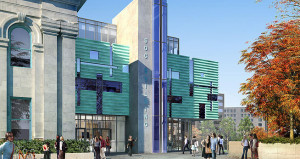

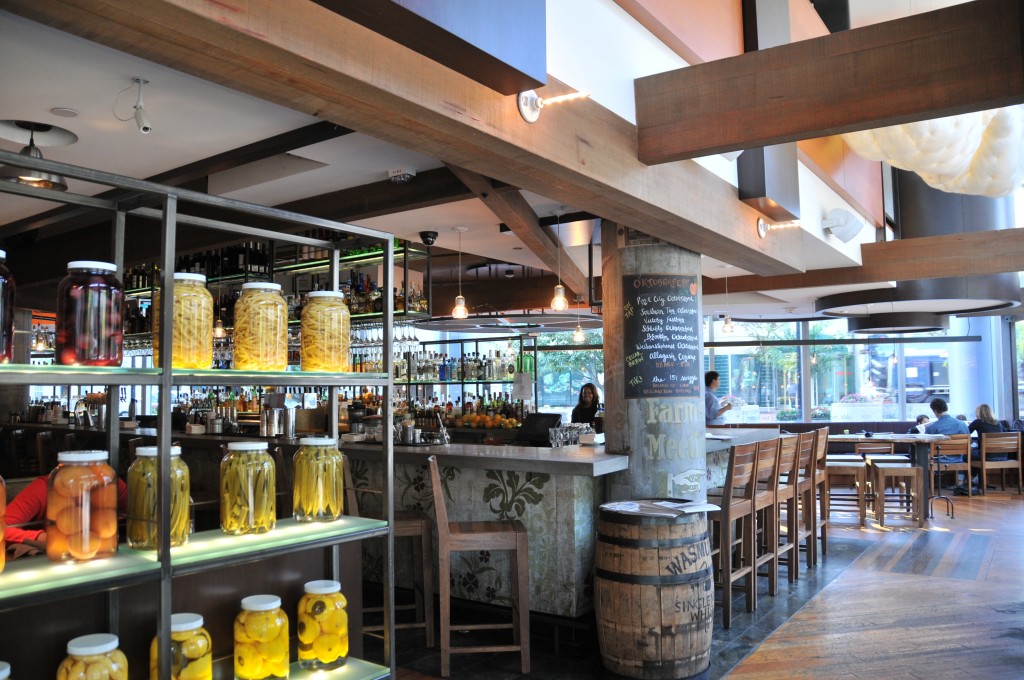
What kick-started the “Greenest College Town” universities and colleges was the so-called College and University Sustainability Pledge, a DC government initiative of a few years ago. Actually, several of the schools had already started down the sustainability track earlier with LEED certifications.
“All of us were already meeting on a regular basis to share best practices and figure out if there were ways to work together,” says Georgetown’s Meghan Chapple, sustainability director. Referring to the Pledge, she adds: “It sent a signal to the D.C. constituents that this was a sector that was taking sustainability seriously.”
“The [‘superstar institutions’] leaders help to mentor those institutions that are maybe just starting their sustainability journey,” says Jaime Van Mourik, higher education strategic lead for the USGBC.
Fred Weiner of Gallaudet University asserts: “A lot of what we do at Galludet is tied to the mayor’s pledge that we signed in 2012. It gave us some objectives to meet…”
From the DC government’s webpage about the Pledge, “[It] is an agreement by the schools to pursue a range of sustainability measures related to energy use and buildings, green education, transportation, waste reduction, grounds maintenance, purchasing, and the monitoring and reporting of progress.”
Unlike the rigorous 3rd-party verification offered by LEED, it turned out that the varying sustainability objectives, and ability to fund them, created differences among the institutions. In the end, that turned out to be okay.
Here are several examples of sustainability initiatives completed/underway:
- AU announced plans to become carbon-neutral by 2020. Solar electric and hot water systems on campus rooftops have been installed
- Galludet’s Green Grow garden produces fresh fruits and vegetables for consumption in the student dining hall and for sale at local farmers markets
- At GW’s Corcoran College of Art + Design, a highly reflective roof on one of its buildings was installed, reducing heating/cooling loads up to 40 percent. GW’s GWater Plan is considered one of the most comprehensive water sustainability plans nationwide, calling for a 25% reduction in potable water over 10 years (2008 baseline).
- Howard’s School of Architecture and Design has infused green and environmental design into its BArch degree program. One of its news buildings is targeted for LEED certification.
♦♦♦
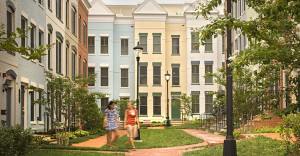
Bethesda, Maryland-based housing developer EYA’s product is: “Built to LEED for Homes standards set by the [USGBC] for environmental friendliness and energy efficiency.” (Source: EYA website.) So, that’s some of what its customers are paying for. In parlance, slightly higher up-front building costs for lower operating costs down the road.

Its 323-home Capitol Quarter project is claimed as a mixed-income community in Southeast DC. It was delivered in 2009. Located near Nationals (baseball) Park, the mix of owners is in thirds. Low income, moderate/working-income and market rate. Hey, how’d dey do dat?
Under its Inclusionary Zoning Affordable Housing Program, the DC government requires that a portion of affordable units be set aside in exchange for bonus density. The 2013 Washington DC Metropolitan Area Median Income (AMI) equals $107,300/yr. For an average HH of 4, the qualifying AMI range is from $54.7 to $86.9K/yr.
One of EYA’s officers, Brian Jackson, when interviewed recently by writer Kiley Jacques: “We believe that through better design we could increase the density and really transform the townhouse product from a price-point product into a luxury product.”
(A source for a share of the information about “America’s Greenest College Town” and EYA is a recent USGBC magazine issue.)
♥♥♥
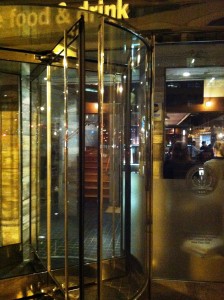
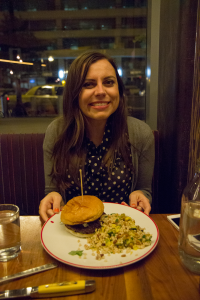 Come back next week for a discussion about DC’s Founding Farmers Restaurant in Part 2 of this post. (May not remember? Consider subscribing to the blog or setting up an RSS feed.)
Come back next week for a discussion about DC’s Founding Farmers Restaurant in Part 2 of this post. (May not remember? Consider subscribing to the blog or setting up an RSS feed.)